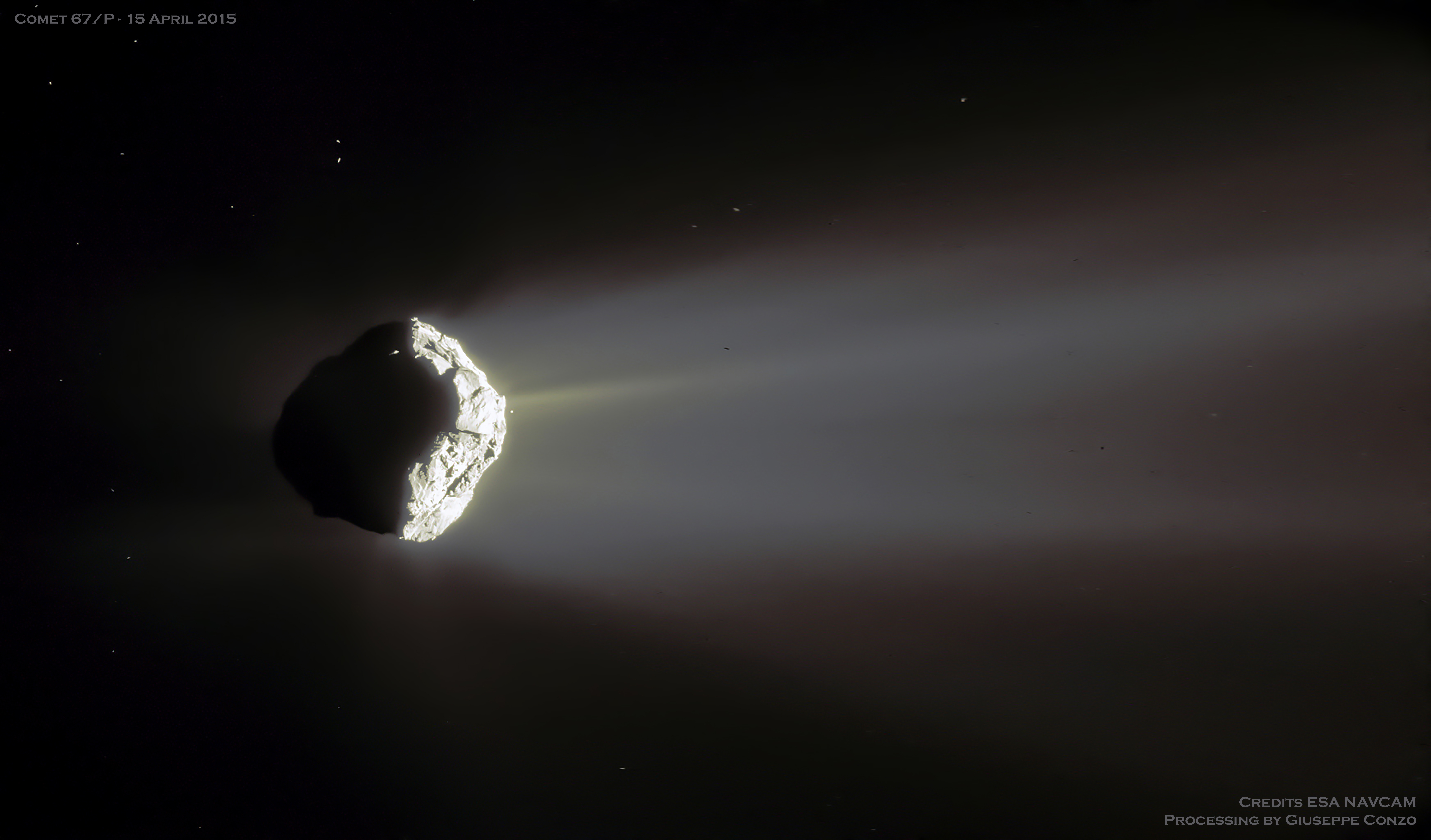
Copyright:
原文:
What’s happening to Comet 67P/Churyumov�Gerasimenko? As the 3-km wide comet moves closer to the Sun, heat causes the nucleus to expel gas and dust. The Rosetta spacecraft arrived at the comet’s craggily double nucleus last July and now is co-orbiting the Sun with the giant dark iceberg. Recent analysis of data beamed back to Earth from the robotic Rosetta spacecraft has shown that water being expelled by 67P has a significant difference with water on Earth, indicating that Earth’s water could not have originated from ancient collisions with comets like 67P. Additionally, neither Rosetta nor its Philae lander detected a magnetic field around the comet nucleus, indicating that magnetism might have been unimportant in the evolution of the early Solar System. Comet 67P, shown in a crescent phase in false color, should increase its evaporation rate as it nears its closest approach to the Sun in 2015 August, when it reaches a Sun distance just a bit further out than the Earth.
中文翻譯:
近期,67P/Churyumov-Gerasimenko 彗星正朝向太陽移動,隨著接近太陽,熱量令彗星核不斷排放氣體和塵埃。來自 Rosetta 太空船的最新數據顯示,這顆約有3公里寬的彗星,其所排放的水與地球上的水有顯著差異,這意味著地球的水可能不來自於古老的彗星碰撞。此外,Rosetta 及其 Philae 登陸器也未在彗星核周圍探測到磁場,這表明在早期太陽系進化過程中,磁性或許不太重要。67P 彗星在2015年8月將以一個略遠於地球的距離達到最近的太陽位置,屆時它的蒸發率將會增加。
#彗星67P #Rosetta #Philae #太陽系 #水的來源 #宇宙探索 #太空神奇
來源:NASA每日圖片


